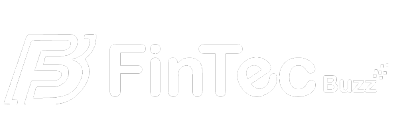It’s no secret that the value of currency is constantly in flux. Businesses with international dealings must monitor these fluctuations daily, as economic data, interest rate spreads, and market sentiment all play significant roles. As 2024 came to a close, the Canadian dollar (CAD) attracted attention, dropping to a low against the US dollar (USD) not seen since March 2020.
The widening gap in interest rates between the two countries, alongside the threatened 25% tariffs on imports, have fueled much of this movement. When looking at currency markets there is always a constant: risk. It is often overlooked, however, that risk is a two-way street. Therefore, it is not the risk itself but rather the managing of it that is all important.
In some cases, companies try to circumnavigate market volatility by sending US dollars instead of converting to a local currency. The problem with this approach is that unless the beneficiary bank account is denominated in USD, one of two things will happen.
Either the payment will be bounced by the beneficiary bank because the currency is not a match for the bank account or the payment will be converted to the local currency before crediting at an arbitrary, and more than likely unfavorable, exchange rate. Whichever happens, the company will have failed from a payroll perspective because either the employee will not have been paid on time or he/she will have received an incorrect amount.
More commonly, businesses adopt a hedging strategy, rather than playing a dangerous game of chicken with the exchange rate. In short, hedging involves purchasing some or all the currency you will need over an extended period in advance, at the prevailing exchange rate, avoiding future risk of that currency dropping in value and becoming more expensive to buy later on. Using this approach, businesses can make cost projections that are far more accurate and eliminate a significant amount of risk.
A Market Order is another tool that companies turn to. These sit in the market and automatically trigger a purchase of currency if the designated exchange rate is hit. A “Limit” order enables a company to target an exchange rate above where the market is trading in the hope that there is a positive spike in price activity. Conversely, a “Stop Loss” order sits below where the market is trading and protects against downside risk caused by adverse market fluctuations.
Markets can be fickle beasts and even a commonly traded currency such as CAD can require a thick skin and a heightened awareness of risk. Last year there was a +8% swing between the high and the low against USD. Shifts of this nature are frequent and can hit with little warning.
2025 may be the year that payroll starts to “embrace hedging strategies” more than it has in the past. Looking at the global political landscape, there is a lot of uncertainty. This will play into economic markets and, therefore, impact exchange rates. The effect these have on payroll costs have often been lost as they are treated in isolation, per cycle.
However, we are seeing a growing number of companies looking at currency risk over a longer period, some annually and others over a shorter period, perhaps quarterly. This does not mean that it is appropriate or even necessary for every business to hedge its currency exposure. By being conscious of it, the company is able to make a more informed decision as to the right approach to risk management based on its own unique circumstances.
Stay Ahead of the Financial Curve with Our Latest Fintech News Updates!

Mike Eralie, COO of Safeguard Global Pay
Mike has 30+ years of experience in technology management, with the last 21 years spent on HR and payroll. His career has focused on diverse customers and the unique needs of global organizations. He strives to constantly improve and innovate, and he enjoys inspiring others to grow.
Mike Eralie
Mike has 30+ years of experience in technology management, with the last 21 years spent on HR and payroll. His career has focused on diverse customers and the unique needs of global organizations. He strives to constantly improve and innovate, and he enjoys inspiring others to grow.



